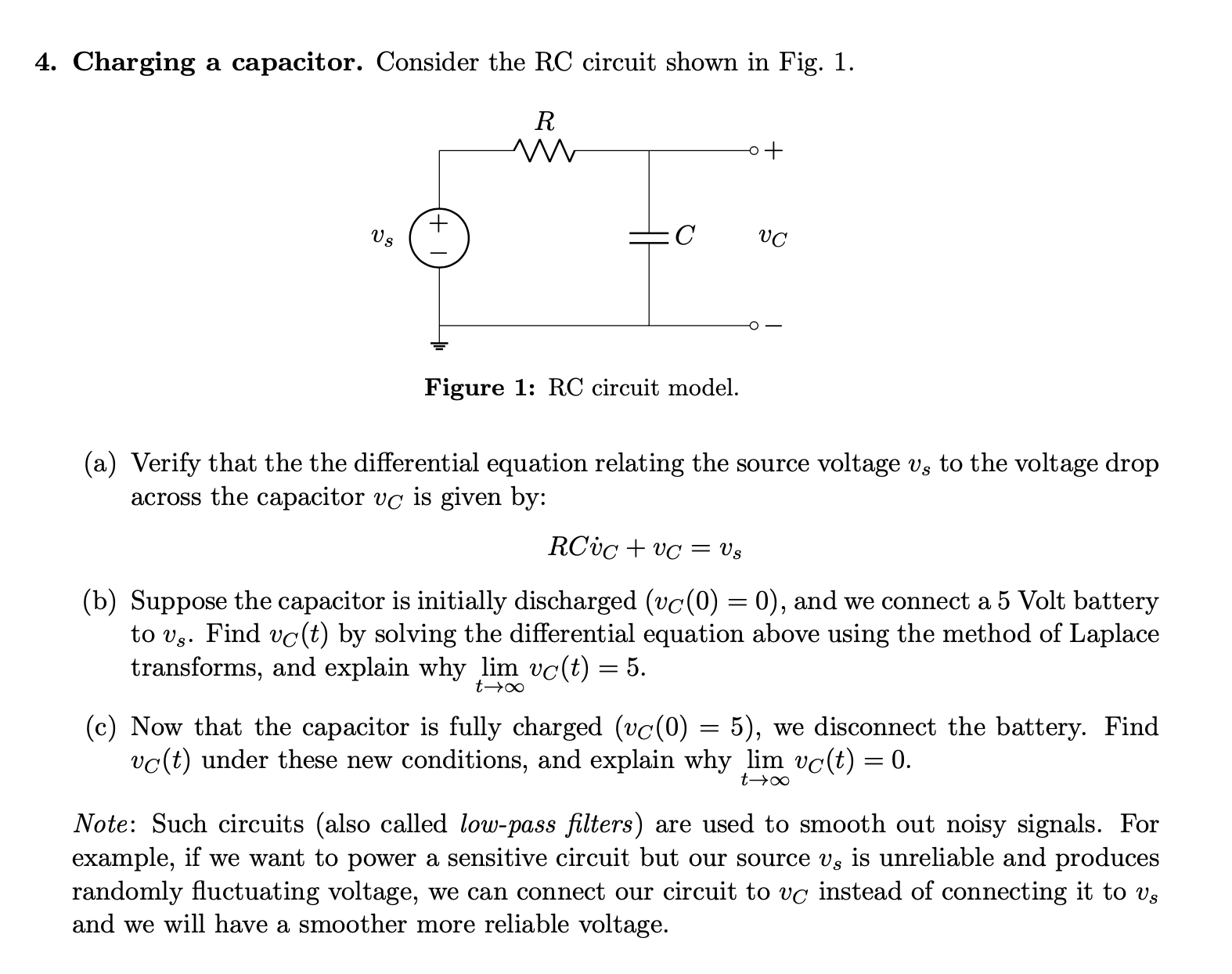Home /
Expert Answers /
Electrical Engineering /
4-charging-a-capacitor-consider-the-rc-circuit-shown-in-fig-1-figure-1-rc-circuit-model-a-v-pa900
(Solved): 4. Charging a capacitor. Consider the RC circuit shown in Fig. 1. Figure 1: RC circuit model. (a) V ...

4. Charging a capacitor. Consider the RC circuit shown in Fig. 1. Figure 1: RC circuit model. (a) Verify that the the differential equation relating the source voltage to the voltage drop across the capacitor is given by: (b) Suppose the capacitor is initially discharged , and we connect a 5 Volt battery to . Find by solving the differential equation above using the method of Laplace transforms, and explain why . (c) Now that the capacitor is fully charged , we disconnect the battery. Find under these new conditions, and explain why . Note: Such circuits (also called low-pass filters) are used to smooth out noisy signals. For example, if we want to power a sensitive circuit but our source is unreliable and produces randomly fluctuating voltage, we can connect our circuit to instead of connecting it to and we will have a smoother more reliable voltage.